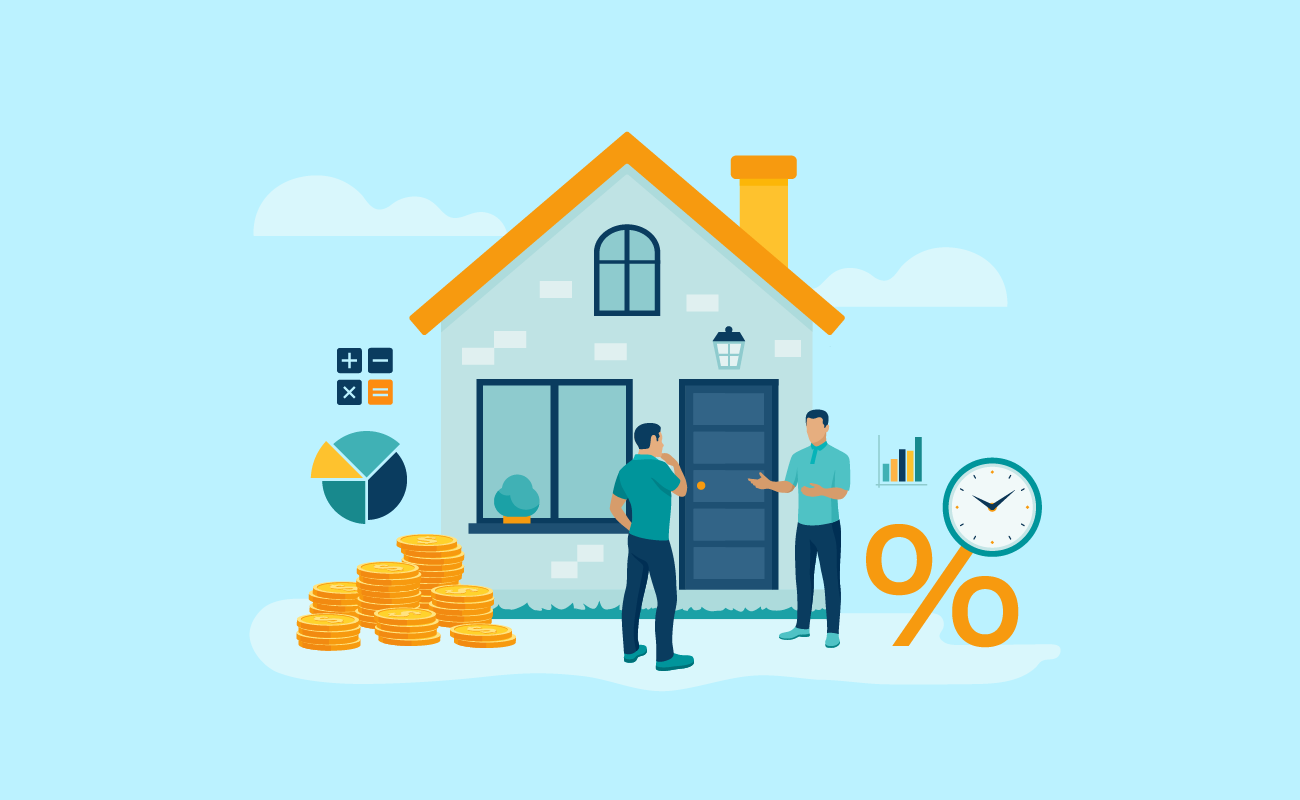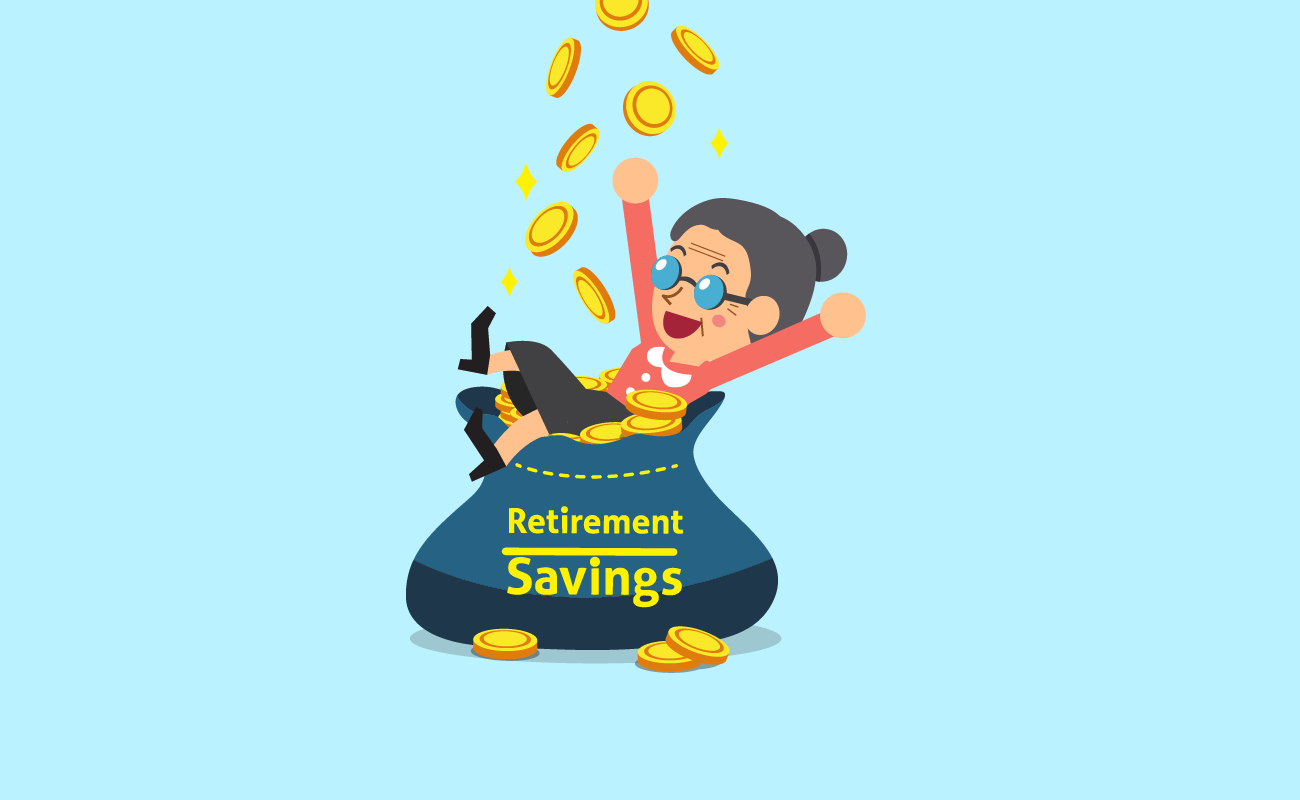
Do you want to estimate what your remaining equity balance will be a few years out from today? Use this free calculator to help determine your future loan balance. This tool is designed to show you how compounding interest can make the outstanding balance of a reverse mortgage rapidly grow over a period of time.
Before reaching your senior years, you’ve probably set aside savings and planned for retirement. But depending on your situation, you might need additional income to support you as you age. While you’ve saved enough for daily expenses, you also have to factor in extra medical bills and other important costs. For some people, they might want extra money to purchase a better home more equipped for senior living. Others may even want an extended vacation to enjoy their golden years.
If you’re close to retirement, it’s a good time to look into reverse mortgages. Our guide will discuss what reverse mortgages are and what they are used for. We’ll focus on Home Equity Conversion Mortgages (HECM), including qualifications for this type of loan and how they work. We’ll also explain the benefits and disadvantages reverse mortgages. By knowing your loan options, we hope to help you make better financial decisions before and during retirement.

Taking a reverse mortgage is a popular financial strategy that helps generate more income during retirement. While people might find it confusing, this is not at all a second mortgage which requires monthly payments. Instead, a reverse mortgage is the opposite of a traditional mortgage: It usually comes in a line of credit paid to you by a lender. The total amount is based on the equity of your home and your life expectancy. It allows you to withdraw a portion of your home equity and convert it into cash. But just like a regular mortgage, it uses your home as collateral.
With a reverse mortgage, borrowers get paid for their home without having to sell and move out of their property. You can withdraw from the credit line as needed, and you don’t have to pay it immediately. Think of it as a bank pre-paying you for your property before you actually move out. You don’t need to make monthly mortgage payments. But of course, you eventually have to pay it back.
You only need to repay the reverse mortgage when:
Important Note: Be sure to maintain the property, pay real estate taxes, and homeowner’s insurance. Failing to do so means your lender will require you to pay back the loan. If you cannot pay it back, you risk losing your home to foreclosure.
How much money do you get? Home equity is the difference between your home’s appraised market value and the mortgage you have against your property. The longer you pay for your home, the more home equity you build. And the more equity you have on your property, the less you owe on it. Thus, having more home equity means you can qualify for a larger loan. Moreover, older borrowers typically receive more money from reverse mortgages. This is because they’ve gained ample home equity, and they are closer to their life expectancy age.
As of 2025, the maximum claim amount for FHA-backed HECMs is $1,209,750, which is 150% of the FHFA's national conforming limit of $806,500. The maximum claim amount is also eligible to Freddie Mac’s special exception areas, which are Hawaii, Alaska, Guam, and the U.S. Virgin Islands.

HECM Payouts & a Younger Spouse
To receive a larger payout on a reverse mortgage, some consider excluding a younger spouse. Involving a younger spouse means the loan will be maintained longer, which results in a smaller payout. However, once the older borrower passes away, not including a younger partner or co-owner from the loan will require them to move out. If your partner wants to keep the house, they must pay off the reverse mortgage. Consider this drawback before excluding a spouse from the loan.
Borrowers use funds from reverse mortgages for various expenses. When you’ve retired, you might need extra income to manage all kinds of costs, such as the following:
Are reverse mortgage payouts taxed? According to the IRS, distributions from reverse mortgages are not taxable. These are regarded as loan advances to borrowers instead of regular income. Though you may take it as a regular monthly payment, lump sum, or line of credit, it’s considered a loan which is eventually paid back. Proceeds used to pay a reverse mortgage come from the home sale when you move or when the home is sold after your death.
The most common reverse mortgage taken by consumers is a Home Equity Conversion Mortgage (HECM). It’s a type of home loan exclusively provided for homeowners aged 62 years old and above. HECMs are federally insured reverse mortgages that are backed by the U.S. Department of Housing and Urban Development (HUD). The payments you receive from this reverse mortgage can be used for any purpose.
To be eligible for an HECM, you must satisfy the following requirements:
Besides borrower requirements, your house must meet all FHA property standards:

Just like a traditional mortgage, you must be ready to cover the closing costs for a reverse mortgage. Generally, taking a reverse mortgage is more expensive than other types of home loans. Take note of the following upfront costs:

Can I Finance the Closing Costs?
For borrowers who do not want to pay out of pocket, you can cover the HECM upfront costs by financing them into your loan. This means the proceeds on your reverse mortgage will pay for the closing costs. But beware. Financing closing costs reduces the loan amount, which makes your payout smaller. Think of this before deciding to finance closing expenses.
Though there are no monthly payments for a reverse mortgage, it does require ongoing expenses. The larger your loan balance and the longer your keep your loan, the more you will be charged for ongoing costs. To keep ongoing fees low, only borrow as much as you need. Be sure to anticipate the following costs:
As a requirement, all reverse mortgage borrowers must have an official home appraisal. This is crucial to confirm the property’s current market value, which is a factor that determines the loan amount you’ll qualify for. The higher the appraised value, the more money you can receive on your reverse mortgage. For this reason, some homeowners may have appraisers overstate the value of their home to obtain larger loans.
In 2018, after widespread appraisal concerns, the FHA began requiring second appraisals on selected loans where they thought the valuations were inflated. This was implemented to reduce risks to the Mutual Mortgage Insurance Fund. FHA Commissioner Brian Montgomery referred to these appraisal issues on the loan process:
“We have spent considerable amount of time over the last 30 days, including we locked ourselves in here for almost five hours, and we were triaging the HECM portfolio, looking for deficiencies. Looking for areas of concern,” Montgomery said on call with reporters. “There was one area where we are going to hone in on and that’s appraisals.”
“It did dawn on us that we have a higher appraisal on the front end,” he continued. “Given the nature of the reverse product, where the properties tend to deteriorate more, obviously we’re talking about senior citizens, and then now the product is worth less after the life event. We’re almost maybe feeling that pain twice.”
To summarize the difference between an HECM reverse mortgages with traditional mortgages, we created the table below:
| Overview | HECM Reverse Mortgage | Standard Mortgage |
|---|---|---|
| Purpose | Provides funding to a homeowner of advanced age | Provides financing to make it possible to afford a house |
| Eligibility | Should be 62 or older Has equity of the home Occupies home as primary residence Demonstrates the ability & willingness to keep paying property taxes & mortgage insurance | A good credit history & credit score Creditworthiness, ability to make monthly payments Can afford the required down payment |
| Lender Protection | Property collateral only | The borrower’s ability & willingness To repay the loan and property collateral as backup |
| Loan Amount Determinants | Level of home equity & the borrower’s age | Borrower’s income & credit Debt-to-income ratio The property’s value Down payment Applicant’s financial assets |
| Payout of Funds | The lender pays the borrower: Can be taken as a cash withdrawal at outset, a monthly payment, or withdrawn through a credit line | Lender grants a loan to finance the home purchase |
| Repayment Requirements | No periodic payments required Balance due on the borrower’s death or after the borrower has moved out | Borrower pays back the loan in monthly installments Depending on the type of loan, the lender may require a balloon payment to cover the remaining balance |
| Debt Changes Over Time | Increases over time as interest accrues | Declines over time with consistent monthly payments |
Aside from HECMs, there are two other types of reverse mortgages:

Proprietary Reverse Mortgages
These are private loans backed by lending institutions that offer them. This option works similar with HECMs. If you own an expensive property, and you’ve built large equity, you may receive a bigger loan from a proprietary reverse mortgage lender. If your house is appraised with a higher value compared to your mortgage, you’re likely to qualify for a larger loan amount. Similar to HECMs, you can use these funds for any type of expense.
Single-purpose Reverse Mortgages
While reverse mortgages generally allow you to use your money for any cost, a certain type of reverse mortgage puts restrictions on how you spend your money. This is called a single-purpose reverse mortgage, which only allows you to spend funds as your lender approved. This option lets homeowners access a portion of their home equity to cover specific expenses, which are usually home repairs and property taxes. It’s the least expensive option compared to an HECM or proprietary reverse mortgage. The amount is provided as a one-time lump sum payment. Unlike traditional reverse mortgages, you cannot use funds from single-purpose reverse mortgages to pay for medical bills, daily living costs, or vacations.
When it comes to HECM reverse mortgage payouts, borrowers can choose from several options. Depending on your preference and what’s more convenient, you can take it as a one-time lump sum fund, periodic monthly payments, or as a line of credit.
The simplest payment option is to take a lump sum amount all at once. A single disbursement gives you access to all available loan proceeds upon closing. It comes with a fixed interest rate, where your loan balance grows over time as it accrues more interest. This is the least expensive payment option because your interest rate is fixed, and you take out a definite loan amount. However, the amount you can access is usually smaller with a fixed-rate than an adjustable-rate option. Borrowers typically choose this option to purchase a new home that’s more suitable as you age.
You can use the money for the HECM for Purchase program, allowing you to sell the house outright and use funds from the sale with other income sources combined with the reverse mortgage proceeds. This homebuying process can leave you with no monthly mortgage payments.
Most borrowers take their reverse mortgage as a line of credit. Though it comes with an adjustable interest rate, it lets you withdraw funds only and when you need them. It also has a distinct feature: the unused portion of the credit grows over time. This growth feature takes into account how you age each year and how your home appreciates in value. Another advantage is you only pay interest on the money you borrowed. The HECM credit line is guaranteed for a lifetime and allows you to pay the balance at any time without penalty.
You can opt for fixed monthly payments which comes with adjustable interest rates. If you choose a tenure payment, you’ll receive monthly payouts for the rest of your life, as long as you continue to live in your house. Even if the loan balance exceeds the value of the home, the borrower will still receive the same monthly payment. The payments only stop if the borrower moves or passes away.
On the other hand, if you take term payments, you’ll only receive monthly payouts for a limited period of time, such as 10 years. In some cases, to receive the maximum payout benefit, a borrower might want to defer going into Social Security until the age of 70. If this borrower is 65 years old, they can set term payments for five years. The monthly payment remains the same every month even if the home’s value decreases.
Borrowers also have the choice to take a combination of payment options. For instance, you might take a lump sum amount upfront, then keep a credit line afterwards. If you take a modified tenure with a line credit, you’ll have an established credit line while receiving fixed monthly payments for as long as you occupy the residence. On the other hand, if you choose a modified term with a line of credit, you’ll have an established credit line while obtaining fixed monthly payments for a set amount of time.

Ultimately, reverse mortgages are repaid through the sale of a home. Once the property goes into the market after your death, your estate receives the money when it’s sold. This money must then be used to pay off the reverse mortgage. Since interest accrues over the life of the loan, the amount needed to pay off a reverse mortgage will likely be more than the original loan proceeds.
Once the full loan amount is due, the loan balance may be higher than the home’s value. But if your home appreciates and if you kept a low balance, the proceeds from the home’s sale may be enough to cover the reverse mortgage. If this is not enough, your estate may use other assets to allow your heirs to pay off the remaining balance. However, if they want to keep the house, they must pay the reverse mortgage. If they do not have enough funds, they need to qualify for refinancing to take out a new mortgage and pay off the loan.
Note that many reverse mortgages do not allow the loan balance to surpass the home equity’s value. Then again, depending on market fluctuations, your home might still have less equity than when you first took the loan.
The following sections list common scenarios after the borrower’s death:

While taking an HECM is a viable way to obtain supplement income based on your home equity, it comes with disadvantages. Because it uses your home as collateral, if you’re not careful, it puts your home at risk. Here are several reasons why taking a reverse mortgage might not work for you.
For a summary of the pros and cons of HECM reverse mortgages, refer to the table below:

| Pros | Cons |
|---|---|
| Does not require borrowers to make monthly payments | Comes with expensive closing costs and fees |
| Loan proceeds can be used to cover medical bills, debt payments, and other important costs | You’ll face possible early repayment if you are unable to cover property taxes, homeowner’s insurance, maintenance Puts your home at risk of foreclosure |
| Having extra income gives you financial wiggle room in case of emergencies | Most reverse mortgage come with adjustable rates, which means your loan balance can increase over the years Your loan balance may end up higher than the property’s value |
| Allows you to purchase a new home that is more suited for senior living | Reverse mortgage payouts are not tax deductible unlike traditional mortgage payments |
| Spouses listed in the loan agreement may remain in the home after the borrower dies | Unlisted surviving spouses may face possible eviction after the borrower dies If your spouse or heirs want to keep the home, they must pay the reverse mortgage |

Retirees are attracted by the idea of obtaining money from their home’s equity. However, many seniors would also rather leave their home to their heirs. They also do not appreciate the notion of passing on a large debt to their children in case they want to keep the property.
Besides HECM reverse mortgages, there are other investment strategies you can take to prepare for retirement. Maximizing these options ensure you can continue to keep your home and pass it on to your dependents. Opening accounts such as a traditional individual retirement account (IRA), 401(k) account, or a Roth IRA should help you build more savings. These are typically offered by companies once people start working. The earlier and higher your contributions, the more savings you can look forward to come retirement.
When you take a traditional IRA, it uses your pre-tax income to invest money. These accounts are used to invest in stocks, mutual funds, bonds, and other exchange-traded equities. Contributions you make on traditional IRAs are tax deductible. Once you reach 72 years old, it is mandatory to make the required minimum distributions (RMD).
For instance, if you earned $65,000 in a year and contributed $5,000, your taxable income will be reduced to $60,000. The level of tax deduction depends on your assigned modified adjusted gross income (MAGI). You can start withdrawing from your traditional IRA once the account matures, which is when you turn 59 and a half years old. To avoid the 10% penalty fee, avoid withdrawing from your account before the maturity date.
When you take a traditional 401(k) plan, you’re allowed to contribute a part of your pre-tax income to tax-deferred investments, which allows your money to grow on a tax-deferred basis. Traditional 401(k) plans are invested in money market investments, stocks, and mutual funds that offer a diverse spread of bonds. Similar to traditional IRAs, 401(k) plans are subject to appropriate tax deductions. Required minimum distributions (RMD) also apply once you reach 72 years old.
Unlike IRAs, 401(k) plans have higher contribution limits that increase slightly each year. For instance, in 2024, the employee contribution limit is $23,000 & the combined emplyer and employee contribution limit is $69,000. But if you’re 50 years old and up, you’re entitled to an additional catch up contribution worth $7,500, setting the employee contribution limit at $30,500. Your employer is also allowed to match a percentage of your contribution. You can begin withdrawing from your 401(k) plan once your reach 59 and a half years old. Again, to avoid the 10% penalty, refrain from withdrawing before the account matures.
The contributions you make on a Roth IRA are made up of after-tax income. This means the money you invested is not tax deductible if you meet certain conditions. This lets your money increase tax-free over the years. Taking a Roth IRA is a good option if you think your future tax rate will be higher upon retirement compared to your current tax rate.
As of 2024, contributions to a Roth IRA is limited to $7,000 a year. If you’re above the age of 50, your maximum contribution increases to $8,000 a year. Unlike traditional IRAs and 401(k)s, you can withdraw from your Roth IRA any time. You won’t have to worry about tax and penalty fees. However, to start withdrawing, your account must be open for at least five years. Roth IRAs also do not impose required minimum distributions (RMD).
Besides retirement accounts, it’s a good idea to open an investment portfolio and invest in stocks, bonds, and mutual funds. These can provide steady sources of funds which also diversifies your income stream. The best part is you don’t have to invest a sizable amount all at once in order to see big gains. Simply making consistent contributions over the years, even if they are small, can help you to build a large portfolio from which to draw when you retire.
Homeowners in advanced age can benefit from reverse mortgages to access their home equity. To qualify for an HECM, they must satisfy FHA requirements must be at least 62 years old. HECM reverse mortgages provide supplement income during retirement. This can be used for healthcare bills, debt consolidation, and other important expenses. Borrowers can even use the money to buy a home that’s more apt for senior living.
Reverse mortgage payments can be obtained as a one-time lump sum disbursement, a line of credit, or in fixed monthly payments. Borrowers can also take a combination of a credit line with fixed monthly payments. As a main benefit, reverse mortgages do not have to be repaid until the borrower sells the house, or when they pass away and the property is sold. But as a major drawback, if the borrower’s heirs want to keep the house, they must pay the reverse mortgage. This can be done by selling other assets to cover the loan, or taking out a new loan on the house to pay off the reverse mortgage.
Explore conventional mortgages, FHA loans, USDA loans, and VA loans to find out which option is right for you.
Check your options with a trusted Exton lender.
Answer a few questions below and connect with a lender who can help you save today!